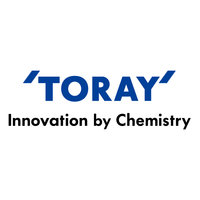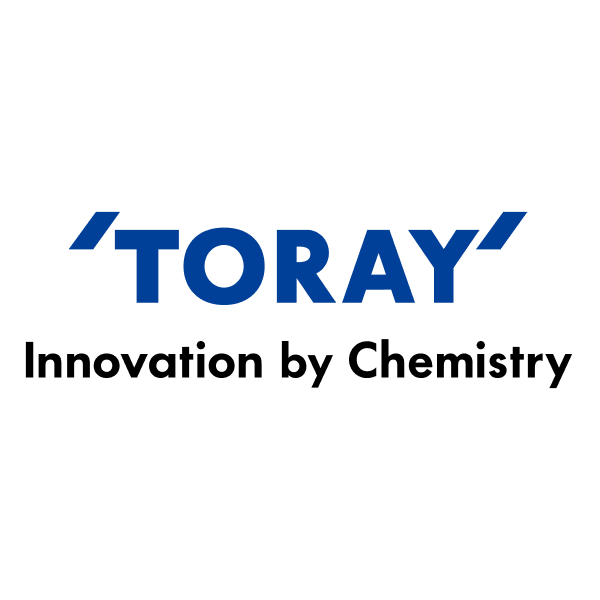
Toray Industries Inc
TSE:3402


Utilize notes to systematically review your investment decisions. By reflecting on past outcomes, you can discern effective strategies and identify those that underperformed. This continuous feedback loop enables you to adapt and refine your approach, optimizing for future success.
Each note serves as a learning point, offering insights into your decision-making processes. Over time, you'll accumulate a personalized database of knowledge, enhancing your ability to make informed decisions quickly and effectively.
With a comprehensive record of your investment history at your fingertips, you can compare current opportunities against past experiences. This not only bolsters your confidence but also ensures that each decision is grounded in a well-documented rationale.
Do you really want to delete this note?
This action cannot be undone.

| 52 Week Range |
635.2
962.2
|
| Price Target |
|
We'll email you a reminder when the closing price reaches JPY.
Choose the stock you wish to monitor with a price alert.
This alert will be permanently deleted.
 Toray Industries Inc
Toray Industries Inc


 You don't have any saved screeners yet
You don't have any saved screeners yet

Thank you very much for coming here today despite your busy schedule. On behalf of Toray Group, I would like to take this opportunity to extend my gratitude towards your continued understanding and your interest in our management and business activities.
Now I would like to report our business results for the first quarter ended June 30, 2018, and the business forecast for the fiscal year ending March 2019.
Please look at Page 1. These are the topics that I will cover today. I would like to begin with a brief summary of business results for the first quarter ended June 30, 2018.
Please turn to Page 3. Net sales of the first quarter increased 8.4% compared with the same period of the previous fiscal year to JPY 550.8 billion. Operating income declined 12.8% to JPY 33.9 billion. Ordinary income fell 11.5% to JPY 35.2 billion, and quarterly net income declined by 12.5% to JPY 22.8 billion.
Page 4 is about non-operating income and expenses. Non-operating income and expenses net improved by JPY 400 million to JPY 1.3 billion compared with the same period of the previous fiscal year. Non-operating income increased by JPY 800 million due mainly to increase in interest and dividend income. Meanwhile, non-operating expenses increased by JPY 400 million due to increase in costs related to start-up of new facilities, including Carbon Fiber Composite Materials-related facilities.
Page 5 is about special credits and charges. Special credits and charges net improved by JPY 300 million to a minus JPY 500 million compared with the same period of the previous fiscal year.
Page 6 is about assets, liabilities and net assets. As of end of June 2018, total assets stood at JPY 2,601.0 billion, up JPY 25.1 billion from the end of the previous fiscal year, primarily due to increases in inventories from seasonal factors as well as property, plant and equipment for capital investments.
Total liabilities increased by JPY 10.0 billion to JPY 1,416.7 billion compared to the end of the previous fiscal, owing mainly to a higher level of interest-bearing debt.
Total net assets rose JPY 15.1 billion compared with the end of the previous fiscal year to JPY 1,184.3 billion, reflecting an increase in retained earnings due to recognition of net income.
Owner's equity was JPY 1,105.5 billion. Interest-bearing debt was JPY 836.8 billion and D/E ratio was 0.76 points.
Page 7 explains about capital expenditures, depreciation and R&D expenses. Capital expenditures for the first quarter decreased by JPY 2.1 billion to JPY 30.5 billion on a year-to-year comparison. Depreciation increased by JPY 1.9 billion to JPY 25.0 billion. R&D expenses increased by JPY 1.7 billion to JPY 17.6 billion.
This graph on Page 8 describes the factor analysis of JPY 5.0 billion decrease in consolidated operating income on a year-to-year comparison. The difference in quantity was a plus JPY 5.2 billion due to increases in production quantity and sales volume related to sales expansion. The net change in price was a minus JPY 3.2 billion due to the continued rising trend in raw material prices despite the efforts to pass on rise in raw material prices to the sales price.
Cost variance, et cetera, was minus JPY 7.2 billion due mainly to increase in costs related to sales expansion and R&D expenses.
Page 9 presents net sales and operating income results by segment. On a year-to-year comparison, sales and income increased in the Fibers & Textiles and the Performance Chemicals segments while sales increased, but income decreased in the Carbon Fiber Composite Materials, Life Science and Other segments. Meanwhile, sales and income decreased in Environment & Engineering segment.
Using Page 10 and after, I would like to explain the results of each segment. First, Fibers & Textiles. Overall sales of the segment increased 9.9% to JPY 221.0 billion compared with the same period a year earlier, and operating income rose 4.9% to JPY 18.5 billion.
With the promotion of the business format that integrates Fibers & Textiles to finer products in apparel applications and industrial applications remaining strong in general with contributions from textiles for automobile airbags in the automotive applications and PP spunbond for hygiene products, Toray Group covered the impact of the rise in raw material prices.
Page 11 is the Performance Chemicals segment. Overall, sales increased 11.1% to JPY 212.4 billion compared with the same period a year earlier and operating income rose 3.4% to JPY 17.2 billion.
Although the segment as a whole was affected by the rise in raw material prices and saw an increase in sales expenses, Toray Group covered the negative impact through sales expansion of resins and chemicals and films products.
I would like to explain each business condition described on the next slide. In the resin business, we expanded sales of ABS and PPS resins while passing on rise in raw material prices to the sales price. Chemical business remains strong, reflecting the improvement of the basic material market.
In the Film business, battery separator films for lithium-ion secondary batteries and MLCC release films remained strong. The electronic and information materials business was affected by the slowing demand for OLED-related materials.
Page 13 is the Carbon Fiber Composite Materials segment. Overall sales increased 7.0% to JPY 45.7 billion compared with the same period a year earlier, while operating income fell 45.7% to JPY 3.1 billion.
Sales volume increased in the industrial and sports application. However, the segment was affected by rising raw material prices and intensifying competition. Major reason for the decrease in operating income of the segment was the adjustment in operating income. This was due to the increase of unrealized profit from transactions between the group companies in line with the sales expansion plan of aircraft applications for the second half of the fiscal year.
The related fees for the acquisition of the entire stake of TenCate Advanced Composites Holding is also included in the adjustment.
Business conditions by application are described on the following slide. Page 14 shows the sales of Carbon Fiber Composite Materials by sub-segment, component ratio as well as the irony of variance. Demand for aircraft application was mostly strong given the completion of the inventory adjustment in the supply chain. However, shipment decreased temporarily due to reasons such as the timing of shipment and changes in production plans of customers.
In sports, end-user demand for fishing rods remain sluggish, however, end-users' inventory adjustment of other applications had been completed and demand mainly for general products, including bicycles and golf shafts, showed signs of recovery.
In the industrial applications, demand showed a recovery trend primarily in the environment and energy-related field led by compressed natural gas tank applications and wind turbine blade applications. Moreover, shipment of composites for PC chassis and electrode substrates for fuel cell vehicles continued to be favorable.
Page 15, in the Environment & Engineering segment overall sales, fell 3.5% to JPY 54.9 billion compared with the same period a year earlier, and operating income declined 56.7% to JPY 1.9 billion. In the water treatment business, demand for reverse osmosis membranes and other products, in general, grew strongly in Japan and abroad.
In terms of Japanese subsidiaries in the segment, an engineering subsidiary experienced decreases in plant constructions and the shipment of electronics-related equipment.
Page 16 is the Life Science segment. Overall sales increased 3.6% to JPY 12.6 billion compared with the same period a year earlier, while operating income declined 81.8% to JPY 200 million.
In the pharmaceutical business, sales volume of DORNER increased for overseas markets, however, sales was affected by its generic versions and the revision of National Health Insurance drug price standards.
Sales of REMITCH were influenced by the adjustment in inventories with distributors ahead of the market entry of its generic versions.
The medical devices business was affected by the reduction of the insurance reimbursement prices in Japan and the increase in raw material prices, while shipment of dialyzers grew strongly in Japan and overseas. The main cause of the decline in operating income was the decrease in adjustment of unrealized profit from transactions between the group companies.
Page 17 shows the business results of major subsidiaries and regions. At Toray International, Fibers & Textiles business performed strongly. Toray Engineering experienced the decreases in plant constructions, which was robust in the same period a year earlier, and the shipment of LCD color filter manufacturing equipment.
In terms of subsidiaries in Southeast Asia, in the Fibers & Textiles business, PP spunbond for hygiene products and textiles for automobile airbags performed strongly despite some subsidiaries reporting sluggish performance.
In the Performance Chemicals business, ABS resins and resin compounds for automotive applications performed strongly.
As for subsidiaries in China, Fibers & Textiles business reported strong performance as a whole with sales expansion of textiles, garments and adding value at the same time.
In the Performance Chemicals business, sales of resin compounding business expanded and the group proceeded with passing on rise in raw material prices to the sales price.
In Other business, sales expanded in the water treatment membrane business.
In regard to subsidiaries in Korea, despite the effect of the sluggish domestic market, intensifying competition and the rise in raw materials cost and fuel prices, Fibers & Textiles business performed strongly with sales expansion in export business and efforts were made to pass on rise in raw material prices to sales price.
In the Performance Chemicals business, sales of high-performance materials for mobile devices remained sluggish.
Next, I would like to explain the consolidated business forecast for the fiscal year ending March 2019. Please turn to Page 19. As for the forecast for the fiscal year ending March 2019, Toray revised its full year consolidated forecast reflecting the business performance of the first quarter and changes in business environment. It now expects consolidated net sales of JPY 2,450.0 billion. Toray has kept its forecast of full year consolidated operating income, ordinary income and net income announced on May 10 unchanged. This forecast from July onwards is based on an assumed foreign currency exchange rate of JPY 110 to the U.S. dollar.
Page 20 indicates the consolidated business forecast for the fiscal year ending March 2019 by segment. The upper table represents net sales and the lower table shows operating income with the difference from the initial forecast located on the far right of the slide.
Page 21 shows the comparison of operating income between the initial forecast and the new forecast by segment. The variance factors are explained on the right-hand side of the slide with breakdowns into segments.
In the Fibers & Textiles segment, we intend to expand sales of each application and pursue advancement of products and cost reduction.
In the Carbon Fiber Composite Materials segment, we expect negative impact of the rise in raw material prices and increase in expenses of some subsidiaries.
This concludes my presentation. Thank you very much.